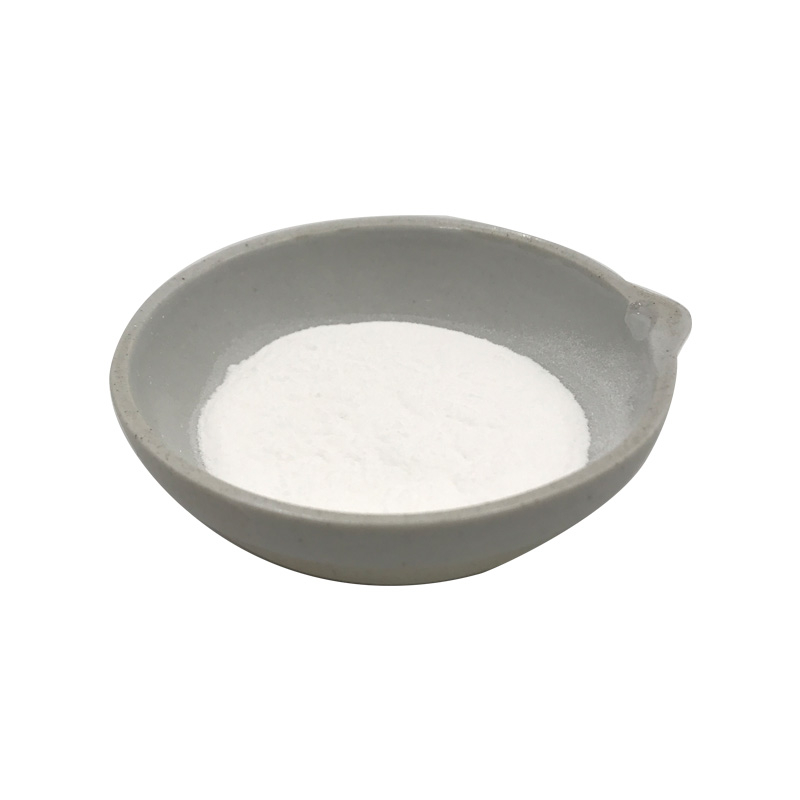Products Description of 5-CHLORO-PYRAZINE-2-CARBOXYLIC ACID CAS#36070-80-15-Chloropyrazine-2-carboxylic acid is a pyrazine compound.CAS No.
Contact Now
Products Description of 4-Chloro-2-nitrobenzoic acid CAS#6280-88-2 4-Chloro-2-nitrobenzoic acid, also known as p-chloro-o-nitrobenzoic acid, is an important organic intermediate used in a variety of production fields such as pesticides, medicines, and dyes.
Contact Now
Products Description of 5-Chloro-2-(methylamino)benzophenone CAS#1022-13-5Yellow or reddish yellow granular crystals.5-Chloro-2-(methylamino)benzophenone Chemical PropertiesMelting point 93-95 °C (lit.)Boiling point 421.9±35.0 °C(Predicted)density 1.234±0.06 g/cm3(Predicted)storage temp. Keep in dark place,Inert atmosphere,Room temperaturesolubility Chloroform (Slightly), Dichloromethane (Slightly), DMSO (Slightly), Methanol (Very Slightly)form SolidpkapKa 1.45±0.04(7% EtOH in H2O,t =25,0.02 to 0.40M in HCl) (Uncertain)color Light Yellow to YellowBRN&nbs
Contact Now
Products Description of 5-Chloro-2-pentanone CAS#5891-21-4Liquid. Boiling point 76℃ (4.53kPa), 71-72℃ (2.67kPa), relative density 1.0523 (20/4℃), refractive index 1.4375, flash point 35℃.
Contact Now
Products Description of 5-Bromo-4-chloro-7H-pyrrolo[2,3-d]pyrimidine CAS#22276-95-5 5-Bromo-4-chloro-7H-pyrrolo[2,3-d]pyrimidine belongs to nitrogen heterocyclic. 5-Bromo-4-chloro-7H-pyrrolo[2,3-d]pyrimidine Chemical PropertiesMelting point 221-225℃Boiling point 221.0±50.0 °C(Predicted)density 2.15±0.1 g/cm3(Predicted)storage temp. under inert gas (nitrogen or Argon) at 2-8°Cform solidpka9.43±0.20(Predicted)color YellowWater Solubility Slightly soluble in water.InChIKeyOXLMTRZWMHIZBY-UHFFFAOYSA-NCAS DataBase Refer
Contact Now
Products Description of 3-Chloro-5-Methylpyridazine CAS#89283-3-183-Chloro-5-methylpyridazine is a pyridine derivative, commonly used as a pharmaceutical intermediate.3-Chloro-5-Methylpyridazine CAS#89283-3-18 Chemical PropertiesMelting point 139-140 °CBoiling point 259.7±20.0 °C(Predicted)density 1.234±0.06 g/cm3(Predicted)storage temp. Inert atmosphere,2-8°Cform liquidpka1.91±0.10(Predicted)color YellowCAS DataBase Reference89283-31-8Safety InformationHazard Codes Xi,XnRisk Statements 22HS Code 2933998090Product Application of 3-Chl
Contact Now
6-CHLORO-9-(TETRAHYDRO-2-PYRANYL)-PURINE Chemical PropertiesMelting point 149-151℃Boiling point 428.3±55.0 °C(Predicted)density 1.604Fp 213°(415°F)refractive index 1.7410storage temp. Inert atmosphere,Store in freezer, under -20°Cpka0.79±0.10(Predicted)form Solidcolor White to pale yellowCAS DataBase Reference7306-68-5(CAS DataBase Reference)Safety InformationHS Code 2933998090Factory and Equipment ShowFast delivery timeInventory 2-3 working days New production 7-10 working days
Contact Now
Products Description of 5-CHLORO-3-METHYLBENZO[B]THIOPHENE CAS#19404-18-33-Methyl-5-chlorobenzothiophene is a pharmaceutical intermediate. 5-CHLORO-3-METHYLBENZO[B]THIOPHENE CAS#19404-18-3 Chemical PropertiesMelting point 33 °CBoiling point 87 °Cdensity 1.293±0.06 g/cm3(Predicted)storage temp. 2-8°Csolubility soluble in Methanolform powder to lumpcolor White to Yellow to OrangeCAS DataBase Reference19404-18-3(CAS DataBase Reference)Safety InformationHazard Codes Xi,XnRisk Statements 36/37/38-22Safety Statements 26-37/39Hazard Not
Contact Now
Products Description of 2-Ethylhexanoic acid CAS#149-57-5 Colorless liquid with slight odor.
Contact Now
Products Description of 2-Methoxy-5-pyridineboronic acid CAS#163105-89-32-Methoxy-5-pyridineboronic acid, an organic chemical substance, molecular formula: C6H8BNO3.2-Methoxy-5-pyridineboronic acid Chemical PropertiesMelting point 135-140 °C(lit.)Boiling point 313.2±52.0 °C(Predicted)density 1.24±0.1 g/cm3(Predicted)storage temp. 2-8°Cpka7.26±0.10(Predicted)form powder to crystalcolor White to Almost whiteWater Solubility Soluble in water.BRN 9119950InChIKeyDHADXDMPEUWEAS-UHFFFAOYSA-NCAS DataBase Reference163105-89-3(CAS DataBase Reference)Safe
Contact Now
Products Description of 5-Methyl-2-Thiophenecarboxylic Acid CAS#1918-79-25-Methyl-2-Thiophenecarboxylic Acid is a colorless, transparent liquid with a melting point of 136-138°C.5-Methyl-2-Thiophenecarboxylic Acid Chemical PropertiesMelting point 135-138 °C(lit.)Boiling point 229.75°C (rough estimate)density 1.365 (estimate)refractive index 1.5300 (estimate)storage temp. 2-8°C(protect from light)pka3.71±0.10(Predicted)form Liquidcolor ClearBRN 113857CAS DataBase Reference1918-79-2(CAS DataBase Reference)NIST Chemistry Reference5-Methyl-2-thioph
Contact Now
Products Description of 3-Chloro-2-hydroxypropyltrimethyl ammonium chloride CAS#3327-22-8This product can be converted into chloride (γ-trimethylammonium-β-hydroxybutyric acid) by cyanidation and hydrolysis.
Contact Now
Products Description of 3-Chloro-6-methylpyridazine CAS#1121-79-53-Chloro-6-methylpyridazine is a heterocyclic compound and chemical raw material. It has a low melting point and boiling point, and is usually light yellow to light beige in powder form.
Contact Now
Products Description of 2-CHLORO-3-METHYLPYRAZINE CAS#95-58-92-CHLORO-3-METHYLPYRAZINE is a chemical. CAS No.is 95-58-9.Molecular Formula is C5H5ClN2.2-CHLORO-3-METHYLPYRAZINE Chemical PropertiesBoiling point 80 °C(Press: 27 Torr)density 1.234g/mlstorage temp. under inert gas (nitrogen or Argon) at 2-8°Cpka-0.31±0.10(Predicted)form Liquidcolor ColorlessLogP1.058 (est)CAS DataBase Reference95-58-9(CAS DataBase Reference)EPA Substance Registry SystemPyrazine, 2-chloro-3-methyl- (95-58-9)Safety InformationHazard Codes XnRisk Statements 22-37/38-41Safet
Contact Now
Products Description of 5-Bromo-2-pyridinecarboxylic Acid CAS#30766-11-15-Bromo-2-pyridinecarboxylic acid is a chemical substance with the molecular formula C6H3BrNO2.5-Bromo-2-pyridinecarboxylic Acid Chemical PropertiesMelting point 173-175°CBoiling point 319.5±27.0 °C(Predicted)density 1.813±0.06 g/cm3(Predicted)storage temp. Keep in dark place,Sealed in dry,Room Temperaturesolubility Soluble in methanol.form Powderpka3.41±0.10(Predicted)color White to off-whiteInChIKeyMNNQIBXLAHVDDL-UHFFFAOYSA-NCAS DataBase Reference30766-11-1(CAS DataBase Reference)S
Contact Now
Products Description of 2-Chloro-6-aminopyrazine CAS#33332-28-42-Amino-6-chloropyrazine is a chemical.CAS No.
Contact Now
Products Description of 1-Chloro-6,6-dimethyl-2-heptene-4-yne CAS#126764-17-8An intermediate in the synthesis of Terbinafine.1-Chloro-6,6-dimethyl-2-heptene-4-yne Chemical PropertiesBoiling point 207-208°Cdensity 0.946Fp 75°Crefractive index 1.4850storage temp. Sealed in dry,2-8°Csolubility Chloroform, Ethyl Acetate (Slightly), Hexane (Slightly), Methanol (Slightly)form Oilcolor Colourless to Pale YellowStability:Light SensitiveInChIInChI=1S/C9H13Cl/c1-9(2,3)7-5-4-6-8-10/h4,6H,8H2,1-3H3InChIKeyZIXABMZBMHDFEZ-UHFFFAOYSA-NSMILESC(Cl)C=CC#CC(C)(C)CCAS
Contact Now
Products Description of 2-Aminothiazole-4-acetic acid CAS#29676-71-9 It is prepared by condensing ethyl chloro or bromoacetyl acetate with thiourea and then hydrolyzing it.2-Aminothiazole-4-acetic acid Chemical PropertiesMelting point 130 °C (dec.)(lit.)Boiling point 399.0±17.0 °C(Predicted)density 1.367 (estimate)vapor pressure 1.03-1.15hPa at 20℃refractive index 1.6430 (estimate)storage temp. -20°Csolubility DMSO (Slightly)pka3.20±0.10(Predicted)form solidcolor WhiteWater Solubility 6.5 g/L (20 ºC)BRN 127415Stability:Unsta
Contact Now
Zirconium, chloro glycine hydroxy aluminum complexes CAS#90604-80-1Factory and Equipment ShowFast delivery timeInventory 2-3 working days New production 7-10 working days
Contact Now
Products Description of Para Chloro Phenol (4-Chloro Phenol) CAS#106-48-9Parachlorophenol, also known as 4-chlorophenol, is an organic compound with the chemical formula C6H5ClO. It is a white crystalline powder, slightly soluble in water, easily soluble in ethanol, ether, chloroform, and benzene.
Contact Now
Products Description of Indole-5-Carboxylic Acid CAS#1670-81-1Indole-5-carboxylic acid is a pharmaceutical intermediate.Indole-5-Carboxylic Acid Chemical PropertiesMelting point 211-213 °C (lit.)Boiling point 287.44°C (rough estimate)density 1.2480 (rough estimate)refractive index 1.5050 (estimate)storage temp. Keep in dark place,Sealed in dry,Room Temperaturesolubility Soluble in ethanol (50 mg/ml), dimethyl sulfoxide and methanol.pka4.40±0.30(Predicted)form Powdercolor Light beige to yellowBRN 124391InChIKeyIENZCGNHSIMFJE-UHFFFAOYSA-NCAS Data
Contact Now
Products Description of ISOQUINOLINE-5-CARBOXYLIC ACID CAS#27810-64-6ISOQUINOLINE-5-CARBOXYLIC ACID is a chemical.
Contact Now
Products Description of 4,5-Dichloro-3(2H)-pyridazinone CAS#932-22-94,5-Dichloropyridazin-3(2H)-one is an organic intermediate that can be used to prepare thiadiazole compounds 4-chloro-2-[(5-ethoxy-1,3,4-thiadiazole-2-)methyl]-5-piperidinyl-3(2H)-pyridazinone.
Contact Now
Products Description of 4,5-epoxytetrahydrophthalic acid diglycidylester CAS#25293-64-5Colorless liquid4,5-epoxytetrahydrophthalic acid diglycidylester Chemical PropertiesBoiling point 447.4±45.0 °C(Predicted)density 1.406Factory and Equipment ShowFast delivery timeInventory 2-3 working days New production 7-10 working days
Contact Now






![5-Bromo-4-chloro-7H-pyrrolo[2,3-d]pyrimidine CAS#22276-95-5](https://sdluxicdn.huazhi.cloud/cdn/ff/n6O11-kOusofVlIEkyt3B5Inja2bduAXUaMe-Ao7Yno/1717583115/public/styles/chanpinzhutu/public/2024-06/%E9%BB%84%E8%89%B2%E9%A2%97%E7%B2%92%20%281%29.jpg?itok=B5t5Y9hr)


![5-CHLORO-3-METHYLBENZO[B]THIOPHENE CAS#19404-18-3](https://sdluxicdn.huazhi.cloud/cdn/ff/SQtnDOdiT42PpMs1NszZi7Tv_d_DUIp_Dx3j0P5hPM4/1720092385/public/styles/chanpinzhutu/public/2024-07/%E5%BE%AE%E4%BF%A1%E5%9B%BE%E7%89%87_20240702152530_3.jpg?itok=CrylVEjT)
























